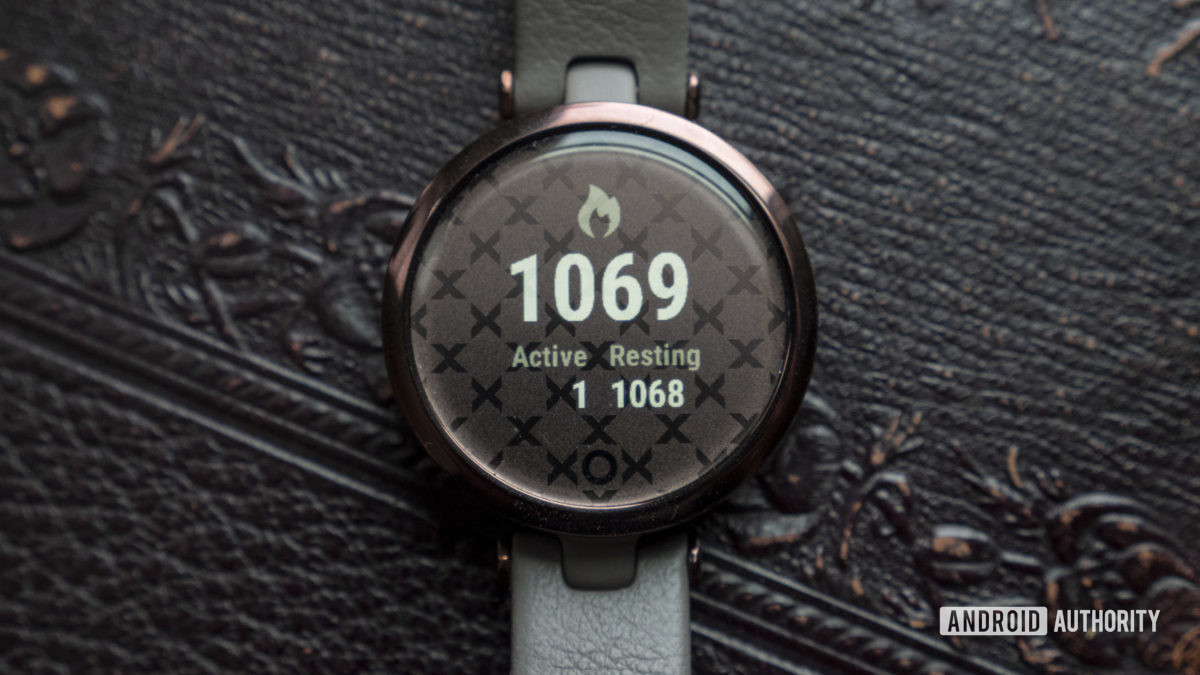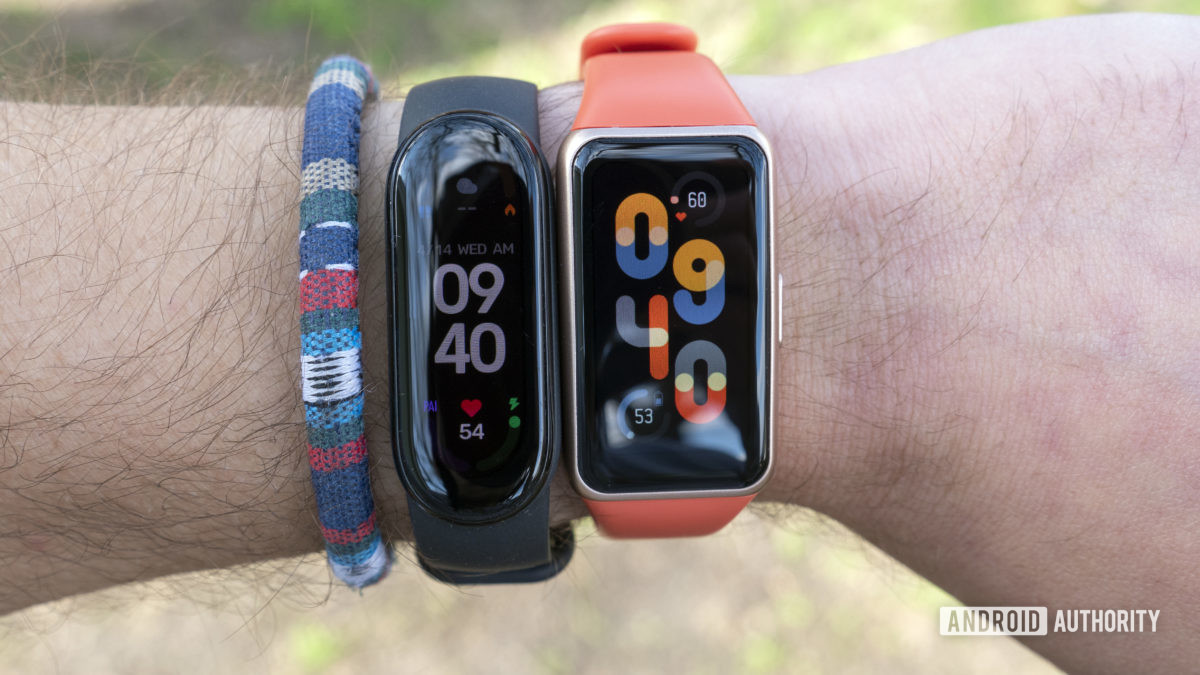Calorie tracking: How to track calories with a fitness tracker

There are many different approaches to losing weight, including countless diets, exercise programs, and meal plans. But for many, learning how to track calories is the most effective option. This is where a fitness tracker becomes extremely useful: they allow you to monitor the number of calories coming in and going out to ensure you maintain a “deficit.”
If you don’t know how to track calories, though, you may find the idea a little daunting. How do you keep track of everything you eat? How do you know how many calories you should be burning? What is a good deficit? Read on, and all will be explained about calorie tracking.
See also: The best fitness apps to get into shape and stay there
How to track calories burned in a day
In theory, losing weight is a simple equation. If you eat more calories than you burn, you will have a “surplus.” Those calories will then be stored around the body as fat. But if you burn more calories than you consume, your body will need to look for extra energy. That energy will come from fat stores, which will be burned for energy.
Losing weight is a simple equation.
Thus, if you want to lose weight, all you need to (theoretically) do is calculate the number of calories you burn on a typical day and make sure to eat less than that.
How many calories do I burn in a day?

This is where things get a little complicated. Of course, there is no way to know with absolute certainty how many calories you burn on any given day. Therefore, you will need to make do with a rough estimate.
So, how can you track calories burned? One way to calculate this is by working out your Active Metabolic Rate (AMR). The AMR is comprised of your Basal Metabolic Rate (BMR) plus your activity.
BMR represents the number of calories you will likely burn while at rest. Even if you don’t move, you’ll still burn calories because you’ll be breathing, maintaining slight tension in the muscles, digesting food, healing wounds, etc. This BMR is calculated based on your weight, height, age, and gender.
For women, it looks like this:
BMR = 655.1 + (9.563 x weight in kg) + (1.850 x height in cm) – (4.676 x age in years)
For men, it is as follows:
BMR = 66.47 + (13.75 x weight in kg) + (5.003 x height in cm) – (6.755 x age in years)
To get an AMR from this, we then need to multiply the result by a set amount. For example:
- Sedentary: AMR = BMR x 1.2
- Lightly active: AMR = BMR x 1.375
- Moderately active: AMR = BMR x 1.55
- Quite active: AMR = BMR x 1.725
- Very active: AMR = BMR x 1.9
The resulting number is your AMR. This is roughly how many calories you burn in a day.
That’s how to track calories… now what?

If you get a score of 2,500, you should aim to eat anything less than that to keep losing weight. The difference between your AMR and your target caloric intake is known as the deficit. A good deficit for most people is around 500 calories. Don’t go too much higher than that, or you are likely to feel tired and hungry and fall off the wagon. Don’t go too much lower, or your progress will be slow.
Conversely, if you eat more than you burn, this is called a surplus.
And to answer the question of “how many calories do I burn in a day?” the answer is roughly 1,600-2,400 for women and 2,000-3,000 for men.
Calorie tracking with fitness trackers

The astute of you might have already noticed that there are some issues here. What if, for example, you have a day where you are particularly active, and you burn a lot more calories? What if you have a few sick days and you stay in bed all day? What if your activity is so varied that you can’t accurately make a prediction?
Note that a higher BMR will actually lead to a higher calorie burn during exercise — so making a flat multiplication like this is actually very simplistic.
See also: The best running watches you can buy
That’s where your fitness tracker can come in handy. Fitness trackers from the likes of Fitbit, Garmin, and Samsung can actively track your activity using their various sensors, thereby creating a much more accurate final estimate of total calorie burn.
Most fitness trackers will ask for your age, sex, weight, and height when you set them up for the first time (and you should be sure to update your weight as this changes). They will then monitor your activity levels throughout the day to adjust that number accordingly. They can tell you the calories burned walking, the calories burned sitting, and the calories burned during that impromptu play-time with the kids. All that, plus your calories burned during exercise. The result is something that should be much more accurate and dynamic.
Moreover, fitness trackers can be a great form of encouragement because they show you how many calories you have left to burn, right there on your wrist!
How to track calories with apps
![]()
Now you know how many you should be consuming and burning. The next question is how to track calories coming in and out.
As far as counting calories goes, the easiest method is to use another app such as MyFitnessPal. Other options include Noom, Nutracheck, Lost It, and others. These should integrate with most good fitness trackers, allowing you to see your current deficit or surplus.
See also: The best health apps for Android
MyFitnessPal allows you to scan food items and log them that way easily. Scan the barcode, and you can quickly get the total calories that food contains, along with other nutritional information. If you are cooking, you can scan the individual ingredients.
MyFitnessPal allows you to easily scan food items and log them.
Once an item is scanned, it will be saved for easy access. You can likewise store and retrieve common recipes. You can also look up countless items that the community has scanned. Type in “Heinz baked beans,” and you will quickly get those details; no scanning necessary.
Of course, you can manually enter calories if you want to guestimate, too.

All this makes the busy work of calorie tracking far less time-consuming, especially as many of us will repeatedly eat the same items. In fact, sticking to a fairly consistent meal plan for at least some meals of the day is a great way to easily reduce calories without putting too much thought into it.
This process can also be eye-opening. You will quickly learn that you consume many “invisible” calories from sources such as cooking oil, butter, soda drinks, and coffee. Cut these out of your diet, and you will immediately make progress.
Don’t forget to exercise

You can lose weight simply by cutting your calories, but adding exercise is highly advisable. This will allow you to eat more while staying in a deficit and will accelerate your progress. More to the point, when you exercise, you actually increase your metabolic rate so that you burn more calories even at rest. In short, you increase your BMR because muscle is more metabolically active.
And once you know how to track calories with your fitness wearable, you’ll be able to see the immediate results of that training.
See also: The best pedometer apps and step counter apps for Android
Again, the key is in the dosage: find a form of exercise that you enjoy and stick with consistently. You don’t need to go to the gym or perform intense HIIT sessions: you can do something fun and simple, like going for walks or even playing a bit of Beat Saber instead.
The key is in the dosage.
And it’s not just about working out, either; it’s also about being more active throughout the day. That means walking more often (calories burned while walking account for a lot of energy expenditure during the day).

You may notice that your tracker provides two numbers after a walk: your total calorie burn and your active calorie burn. What does this mean? Simple: the active calories are what you burned by moving, whereas the total calorie count includes your BMR.
For example, your calories burned walking a mile might be somewhere in the region of 120. However, seeing as you would typically burn about 20 calories in the 15 minutes it takes you, only 100 of those calories were active calories. This is useful to keep in mind if you want to know how to track calories accurately.
The average for calories burned walking is indeed about 100 per mile, but it depends on weight and other factors. Try wearing a weight vest to burn around 12% more!
Why this doesn’t work for everyone
Calorie tracking is a great way to lose weight, and it’s always the first place to start if you’re looking for predictable results.
However, this doesn’t immediately work for everyone. There is a very passionate crowd of people who will tell you that calorie tracking is simple math: the law of conservation. They say that if you aren’t losing weight with this method, you simply aren’t trying hard enough. I find this attitude to be unhelpful and unsympathetic.
Things that affect calories burned in a day

One open-ended variable is BMR. Your resting metabolic rate is dependent on countless factors that aren’t accounted for in this calculation and that not even a fitness tracker can help with. One of the biggest factors is hormones. If you have a slow metabolism due to hypothyroidism, low testosterone, or anything else, you won’t burn as many calories as other people. This won’t be reflected in your BMR or AMR, meaning that you won’t see results by sticking purely to that method.
Medication can also play a huge role here. If you’re on testosterone replacement therapy (TRT), you’ll burn through calories in no time. The oral contraceptive pill can cause weight gain in many women. Antidepressants, anticonvulsants, and countless other medications have similar effects. Gut health plays a role, as do nutrient deficiencies, genetics, and much more.
Remember, calorie tracking is never a precise art
Cutting calories isn’t the problem, per se. The issue is that calorie tracking is never a precise art. You can always try cutting back your caloric intake further, but there comes a point where this becomes untenable. Better would be to see your doctor, try a different diet (this is why things like intermittent fasting or keto can be effective for some people), or increase your exercise.
![]()
A final word of caution is not to consider calorie tracking as the be-all and end-all of health. Theoretically, you can lose weight by eating only donuts and never exercising, as long as you kept your deficit at a certain number.
Hopefully, you don’t need me to tell you that this is not a good idea. Food is not just fuel; it also provides the very building blocks that your body uses to build tissue, create enzymes, and fight infections. Therefore, a proper, balanced diet is key. Likewise, the benefits of exercise go far beyond weight loss.
Learning how to track calories is one thing, but consider it just another tool in your arsenal. Although, with the right tracker and the right strategy, it can be an extremely effective one.
from Android Authority https://ift.tt/3euY28c
No comments